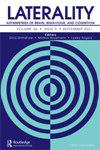《日本智人:机器人、性别、家庭和日本民族》,詹妮弗·罗伯逊著(加州大学出版社)
IF 0.9
4区 心理学
Q4 PSYCHOLOGY, EXPERIMENTAL
引用次数: 0
摘要
Jennifer Robertson的《日本机器人:机器人、性别、家庭和日本民族》评估了过去十年日本的机器人现象。通过对当代技术修复叙事的持续批评,罗伯逊揭示了在技术进步的幌子下,人形机器人是如何被设计和部署来具体化保守价值观的。罗伯逊令人印象深刻的人种志项目将科学事实和小说中的机器人编织在一起,让读者思考人形机器人、机器人、女性机器人和半机械人是如何挑战和物化全球现有的社会结构的。本文章由计算机程序翻译,如有差异,请以英文原文为准。
Review of Robo Sapiens Japanicus: Robots, Gender, Family, and the Japanese Nation by Jennifer Robertson (University of California Press)
Jennifer Robertson’s Robo Sapiens Japanicus: Robots, Gender, Family, and the Japanese Nation assesses the robot phenomenon in Japan within the last decade. Offering sustained critiques on contemporary techno-fix narratives, Robertson reveals how humanoid robots are designed and deployed to reify conservative values under the guise of technological advancements. Robertson’s impressive ethnographic project weaves together robots of science fact and fiction, leaving readers to interrogate how humanoids, androids, gynoids, and cyborgs both challenge and reify existing social structures across the globe.
求助全文
通过发布文献求助,成功后即可免费获取论文全文。
去求助
来源期刊

Laterality
Multiple-
CiteScore
3.60
自引率
7.10%
发文量
26
期刊介绍:
Laterality: Asymmetries of Body, Brain and Cognition publishes high quality research on all aspects of lateralisation in humans and non-human species. Laterality"s principal interest is in the psychological, behavioural and neurological correlates of lateralisation. The editors will also consider accessible papers from any discipline which can illuminate the general problems of the evolution of biological and neural asymmetry, papers on the cultural, linguistic, artistic and social consequences of lateral asymmetry, and papers on its historical origins and development. The interests of workers in laterality are typically broad.
 求助内容:
求助内容: 应助结果提醒方式:
应助结果提醒方式:


